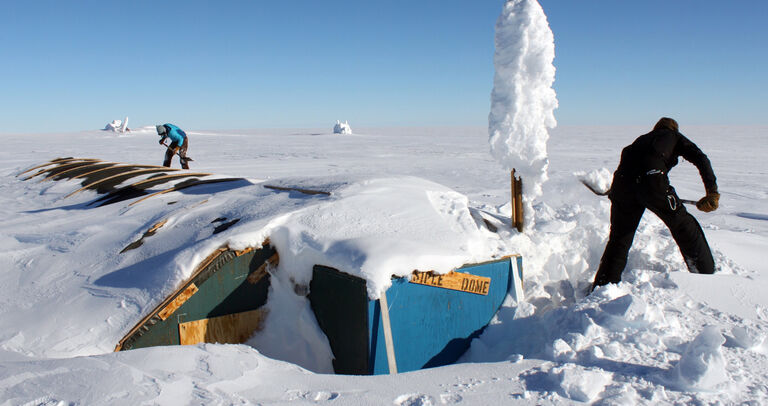Researchers Keep Uncovering 'Artifacts' Within The Frozen Crevasses Of Antarctica
Antarctica isn't the safest continent: temperatures easily reach -130 F, winds whip at 200 mph, and unseen hazards hide beneath the snow. There’s a clear reason why this landmass was never colonized. Though no one settles permanently on the island, researchers and explorers do temporarily live there — and they keep stumbling over reminders of the continent's long history.
Buzz's Trip
When Buzz Aldrin — the man who so famously walked on the moon with Neil Armstrong — arrived in Antarctica, he didn't stay for long. The former astronaut, 86 years old at the time, was immediately transported to a medical facility in Christchurch, New Zealand. He came to understand the lesson all experts on the continent learn.
The Continent That Fights Back
Living on Antarctica is hard. “Humans are the only wildlife," said Andy Martinez, the technical manager at the U.S. Amundsen-Scott South Pole research station. There is "not even a mosquito." Desolate, and like nothing else on Earth, the continent wallops the unprepared — even if you once went to the moon. Even still, it's truly the apple of the scientific eye.
The Antarctic Treaty of 1961
When The Antarctic Treaty was signed in 1961, the legislation ensured the continent would be free from the issues plaguing so many nations across the world. Militaries couldn't build bases, and leaders couldn't send workers to mine the continent for minerals. It was a shared space, dedicated completely to science — which could lead to serious breakthroughs.
En Masse
So, on a freezing landmass free of war, mining, and political strife, researchers could focus on what truly mattered: science, technology, and understanding the world we live in. Biologists, oceanographers, geophysicist, marine experts and more thrived in a hub where they could work unfettered. Still, the job carried plenty of risks; researchers weren't unaware of what made their studies possible.

